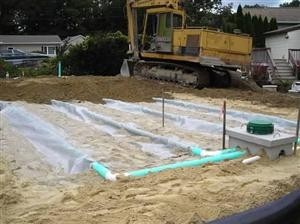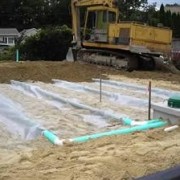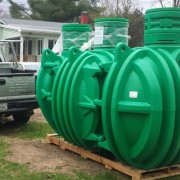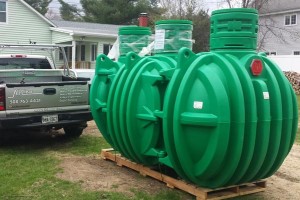Septic System Pump Chamber Basics!
Are you buying or selling a house and find that your septic system is having issues pumping waste to the septic tank? Does your new system require a pumping system? How does a septic pumping system work? All-Clear Septic & Wastewater Services has put together this basic information to answer your questions.
septic tank? Does your new system require a pumping system? How does a septic pumping system work? All-Clear Septic & Wastewater Services has put together this basic information to answer your questions.
A septic pumping system is put into place when a standard gravity feed system will not work due to the quality of soil near the property or the available area is uphill from the septic tank. Different pumps can be used depending on the property. Great care must be taken to ensure the correct pump is used in each situation and is robust enough to handle the anticipated volume to be moved. It could be raw sewage must be pumped to the septic tank itself, treated wastewater is being pumped to the leaching area or a pressurized system is put into place where the effluent is pumped significantly above the tank.
The pump itself should reside within its own separate tank or compartment within a tank. The goal is to prevent any raw sewage solids from clogging the pump or transferring into the leaching areas. An effluent filter may be placed in the line of the system.
With the pumping system properly installed in the tank, there are matters of pipe elevations and slope and length between the pump and the “drop box”. This all needs to be configured so the wastewater does not travel back down the inlet pipe, is moved equally among the various leaching septic system pump chamber basic areas and is not unnecessarily deteriorated by the force of the water being pumped in. There are several techniques to do this.
The leaching area in which the water is pumped to can also be configured in several ways. The engineer must be aware of the soil composition so any chance of erosion, contamination or flow back to the property can be avoided. There are many ways this can be accomplished including multiple fields and location depending on the size of the lot they have to work with.
The ultimate decision to include a pump system will be made by the engineer in conjunction with local inspectors and regulators. You should always follow these recommendations in order to ensure there are no preventable failures in your systems and waste is moved and treated as effectively as possible.
If you have questions or are looking for more information regarding your septic system or want to read the whole white paper on this subject, visit info@allclearseptic.com or call All Clear Septic & Wastewater Services at 508-763-4433.
This blog was posted on www.allclearseptic.com on July 22, 2015.













